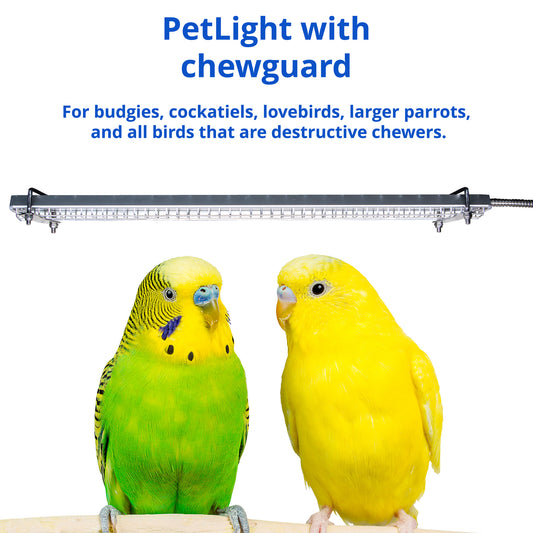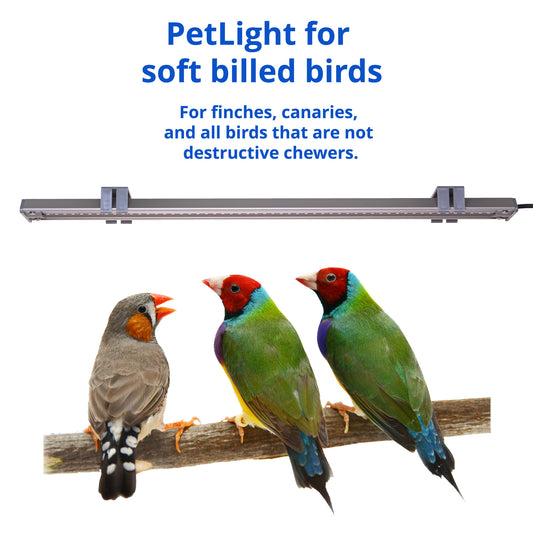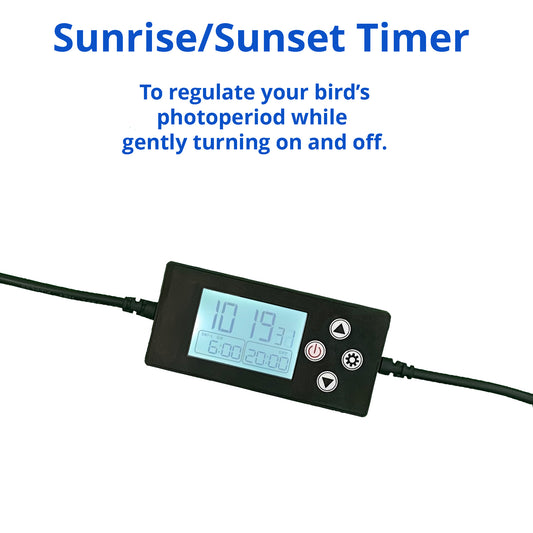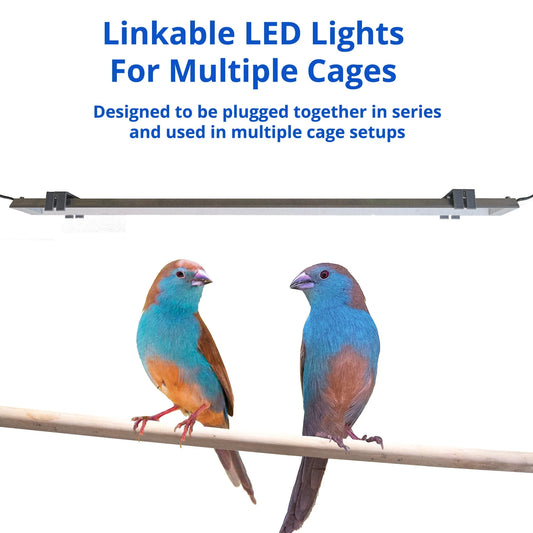How Much Light Do Indoor Birds Really Need?
Share

Light is more than just brightness — for birds, it shapes the entire day.
In the wild, the sun dictates when birds are active, when they rest, and when they prepare for the next cycle. Indoors, those natural signals disappear.
That’s why consistent, bird-appropriate lighting becomes so important in any indoor setup.
So how much light is enough? Let’s explore.
The Natural Standard: 10–12 Hours of Light Per Day
Birds come from environments where daylight lasts most of the day.
In a home, we aim to replicate that consistency — and the best approach is to provide:
10 to 12 hours of consistent, bright, broad-spectrum light every day.
This daily rhythm helps maintain a structure birds can rely on — encouraging activity during the day and calm in the evening.
It’s not about “more light = better.” It’s about light that mimics natural cycles, with clear start and end times.
Why Natural Light Alone Often Falls Short
During winter, natural daylight in many regions drops to 6–8 hours — or even less depending on room orientation. Even in summer, if your bird’s cage is placed far from a window or in a shaded room, they may not receive enough direct, useful light.
Worse, sunlight doesn’t always reach inside the cage. Cage bars, corners, and coverings can block or diffuse light — leaving birds in semi-darkness, even on a bright day.
That’s why supplemental lighting becomes essential, especially in colder months.
Why Room Lamps or Ceiling Lights Don’t Work
Most household lights are designed for humans — not birds. That includes:
✅ Color temperature chosen for comfort, not visibility inside a cage
✅ High-voltage cables that pose a chewing risk
✅ No flicker control (birds see flicker humans can’t)
❌ Light aimed at the room, not the cage
Even a well-lit living room doesn’t provide the brightness and structure your bird would naturally seek from the sky.
What to Look for in Indoor Bird Lighting
Here’s what makes lighting truly bird-friendly:
| Feature | Why It Matters |
|---|---|
| 10–12 hour light cycle | Reinforces the bird’s natural rhythm |
| Cage-mounted lighting | Puts light inside the bird’s actual environment |
| Broad visible spectrum | Mimics the clarity of daylight — without artificial UVB |
| Flicker-free output | Prevents overstimulation birds can perceive |
| Low-voltage (24VDC) | Safe even if chewed — unlike 110–240V household wiring |
This combination helps ensure the lighting is visible, consistent, and safe — without trying to replicate sunlight through UV exposure or room design alone.
Daily Routine Example
A consistent lighting schedule can look like this:
| Time | Action |
|---|---|
| 07:00 | Lights on — simulate sunrise |
| 19:00 | Lights off — simulate sunset |
This provides a stable, natural rhythm your bird can anticipate and settle into — even during winter.
Using a timer or smart switch ensures your routine doesn’t vary, even on busy days.
Final Thoughts
So — how much light do indoor birds need?
The simple answer: 10 to 12 hours per day of direct, broad-spectrum light inside the cage — not in the room, not just by the window.
Household lights may brighten your space, but they don’t match what birds instinctively respond to.
Purpose-built bird lights, mounted close to your bird’s living space, help create a world that feels structured and predictable — without artificial UVB, without flicker, and without guesswork.




